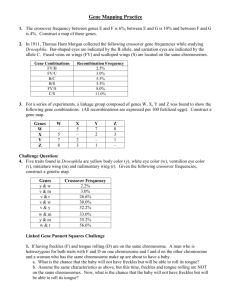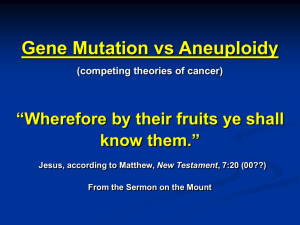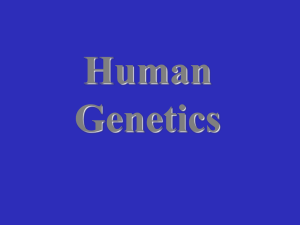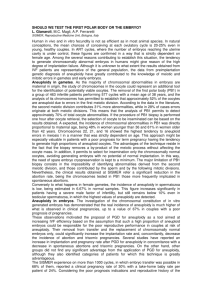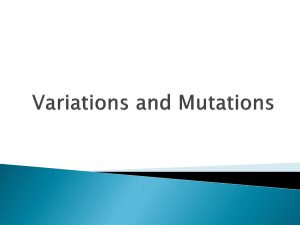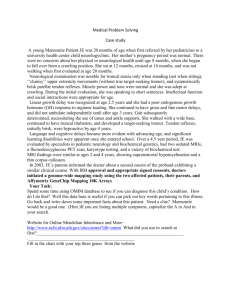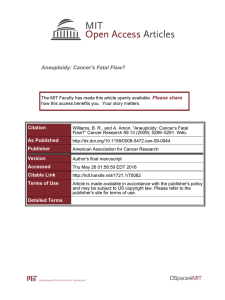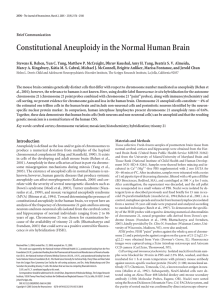File
advertisement
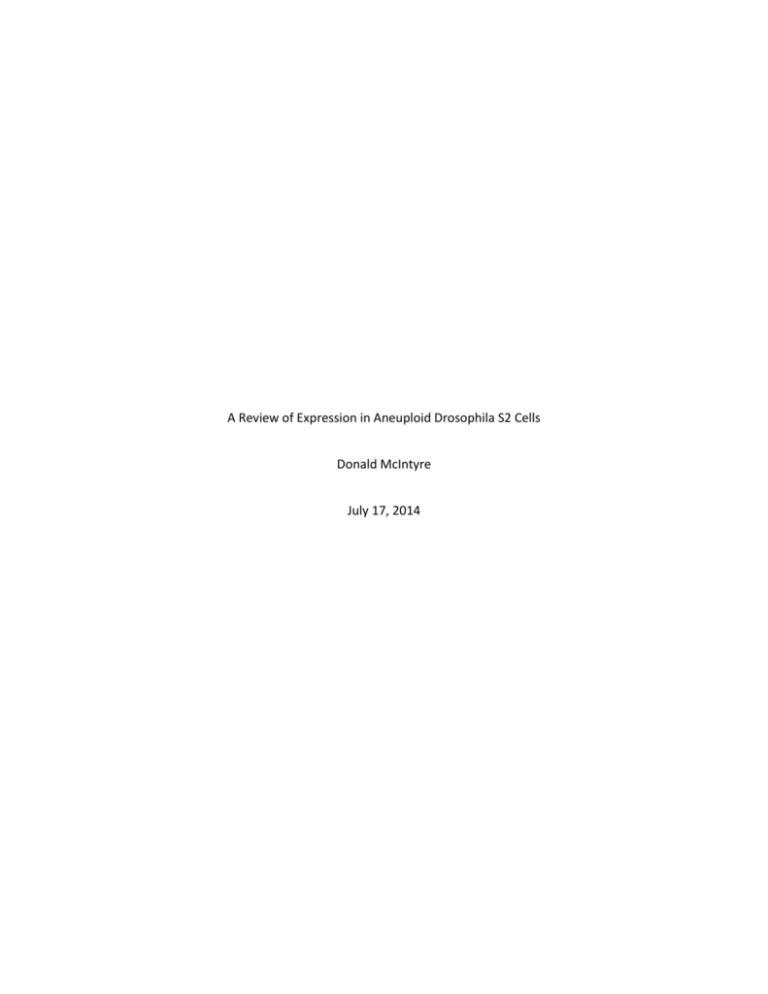
A Review of Expression in Aneuploid Drosophila S2 Cells Donald McIntyre July 17, 2014 A Review of Expression in Aneuploid Drosophila S2 Cells Introduction When you are missing copies of a gene or chromosome it can lead to cancers, miss carriages or disease susceptibility. Zhang, Malone, Powell, Spana, MacAlpine, and Oliver (2010) examined the gene expression in Drosophila cells with different types of gross copy number changes that are typical with cancers. Most somatic cells are diploid with haploid restricted to post-meiotic cells. Chromosomal aneuploidy happens when chromosome are lost or duplicated. A segmental aneuploidy can happen when there are deletions, duplications, and unbalanced translocations. Examples of cells that are like aneuploidy are human cancer cells. Most tumors are diploid or tetraploid that either has extra or lost chromosomes. Aneuploidy is sometime going to take place in a scale of genome balance, for us to understand the way aneuploidy worked requires more studies and experimental understanding of how the result and the general control of all gene. The Drosophila S2 tissue was used as a systematic genome-wide segmental and aneuploidy study. The study identified 5 different tests that included segmental aneuploidy in S2 cells, Genome-wide compensation, X chromosome, MLS complex, and a genome-wide sublinear expression response to gene dose Zhang et al (2010). Methods/Materials To perform the study the authors used cell strains and media for the Drosophila S2 cells. The S2 DNA cells were extracted using a genomic DNA kit. The cDNA was synthesized by a reverse transcriptase using mRNA fragments as a template. The data was compiled into the Firecrest and Bustard application program Zhang et al (2010). Results Next generation sequencing and comparative genome hybridization was utilized to determine the aneuploidy in S2 cells. The results found that S2 cells exhibit large regions of segmental aneuploidy which showed an extra or lost copy. The results suggest that S2 cells are aneuploidy but are a stable genotype. The data suggest that S2 cells are aneuploidy but are a stable genotype. The genome-wide compensation results indicated that there are dosage compensation is genome-wide and not just on the X chromosomes. S2 cells expressed two copies of the X chromosome and four copies of the autosome genes. MLS is bound to certain expressed genes and there is a relationship between expression levels and dosage compensation. The MSL is a feed-forward multiplier causing a fixed-fold effect on the X chromosome expression no matter the number of genes that were copied. The genome-wide sublinear expression response to gene dose the data suggested that the X chromosome is subjected to dosage compensation based on the actual gene dose Zhang et al (2010). Discussion The information that was calculated allowed the authors to formulate two hypotheses. The first hypothesis states that the expression of autosomes will remain the same and the expression of the X chromosome is decreased by half after RNAi treatment. The second hypothesis states that the expressions of autosomes are increased by 2 fold after the RNAi treatment and the X chromosome will stay the same. Genes come in sets of two in diploid organisms. Where there are extra or missing copies of genes it will cause an imbalance that may cause cancer. One of the responses was universal and tries to correct copy number changes. On the X chromosome it tries to increase the expression regardless of the gene dose. This study identifies the importance of balance in gene expression for cells to function Zhang et al (2010). Reference Zhang, L., Malone, J., Powell, S., Periwal, V., Spana, E., MacAlpine, D., & Oliver, B. “Expression in Aneuploid Drosophila S2 Cells.” PLoS Biology February 2010: 1-12 Web 20 June 2014


